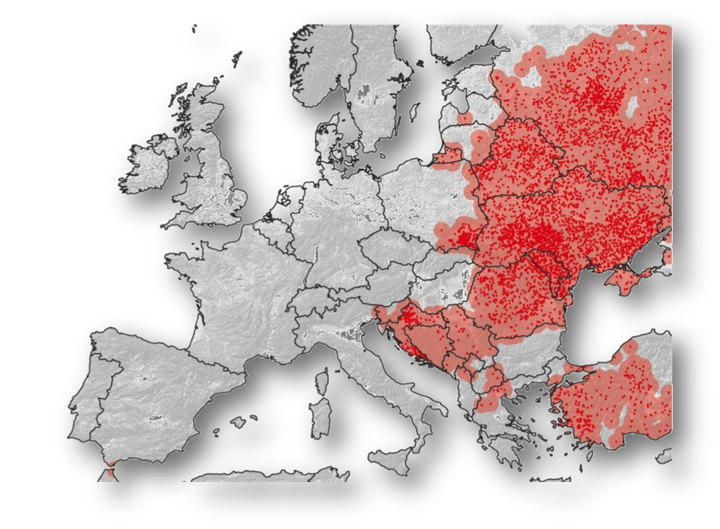Outfoxing Rabies
 Fox Rabies Spread (C) Friedrich Loeffler Institut
Fox Rabies Spread (C) Friedrich Loeffler Institut
Rabies is a deadly viral infection that kills over 50,000 people each year. Mass vaccination can greatly reduce the burden of vaccine-preventable diseases such as rabies, however, there is relatively little scientific guidance as to how long control programmes must operate and how they should be best implemented to achieve elimination. My PhD and Postdoc focused on two pivotal questions in infectious disease ecology:
- What are the underlying determinants of disease persistence?
- How can vaccination strategies be optimised to eliminate infection?
To answer these questions, I analysed a rich and highly resolved spatial dataset of fox rabies cases and oral rabies vaccination (ORV) programmes throughout Western Europe. The long-term, large-scale nature of these data provides a unique opportunity to improve our understanding of wildlife rabies dynamics in response to vaccination using novel spatial modeling techniques.
I developed a cutting-edge hierarchical Bayesian state-space model that incorporates process and observation uncertainty to study fox rabies persistence in response to the timing of vaccination campaigns over the last 30 years in Germany (Baker et al. 2020). I then used this model to explore the optimal timing of vaccination campaigns and the impact of missed campaigns on the time required to eliminate the disease through simulation (Baker et al. 2019).
During my PhD and Postdoc, I collaborated with Prof. Håvard Rue at the Norwegian University of Science and Technology (NTNU) and King Abdullah University of Science and Technology (KAUST) and Dr. Elias Krainski from the Universidade Federal do Paraná (UFPR) in Brazil.
During my MRC fellowship I developed a local spatiotemporal model of fox rabies dynamics fit to the GPS locations of rabies cases using a stochastic partial differential equation (SPDE) approach in the integrated nested Laplace approximation (INLA) framework. By simultaneously modeling the spatial and temporal dynamics of disease spread, I was able to capture key aspects of rabies dynamics to inform ongoing vaccination campaigns in Eastern Europe and Russia.